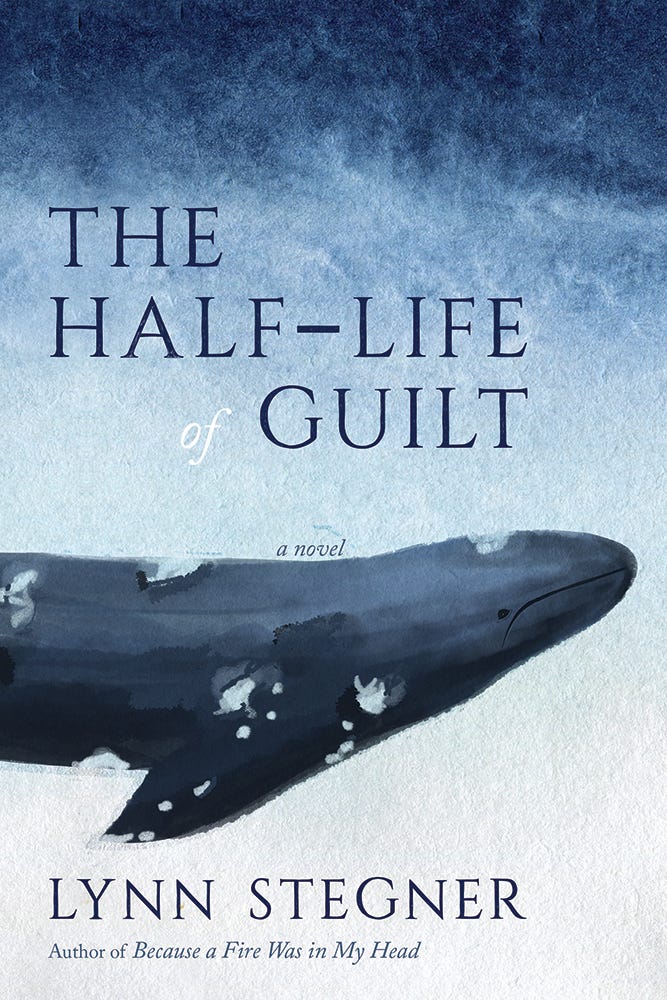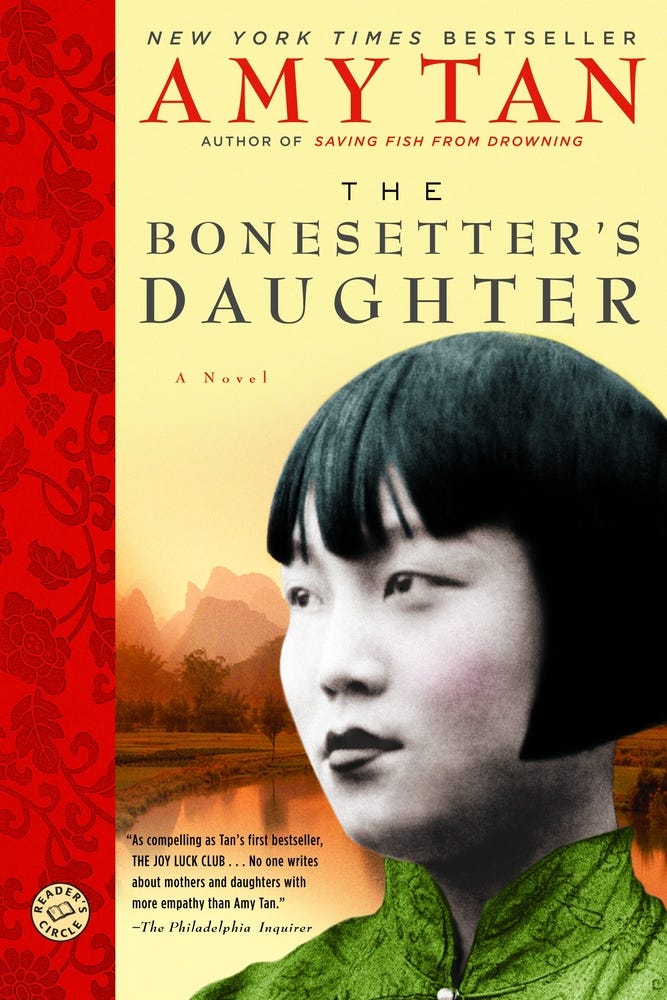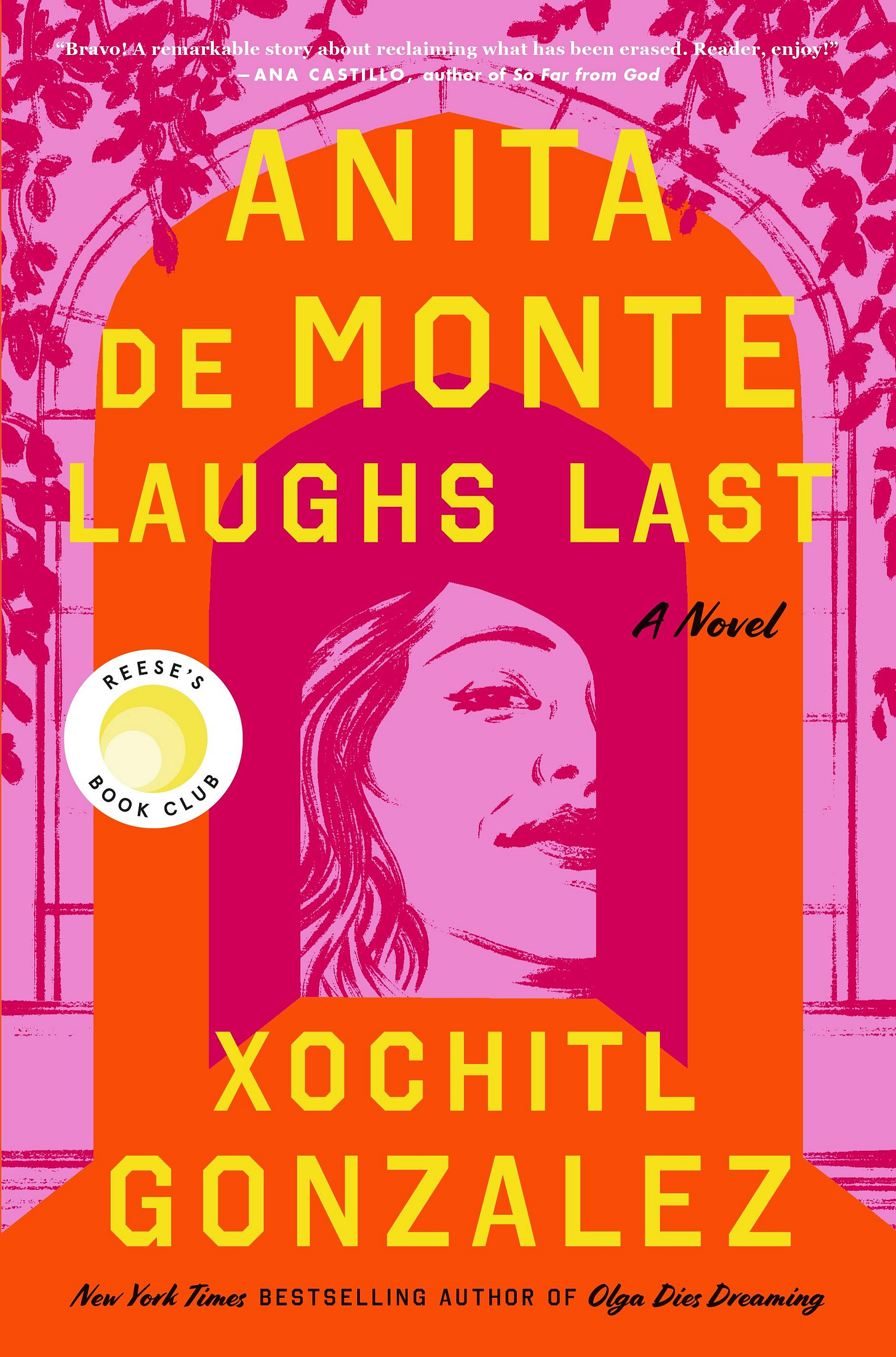Bookworm: October 2024
'The Half-Life of Guilt,' 'The Bonesetter's Daughter,' 'Blink,' 'Anita de Monte Laughs Last,' 'The Southern Book Club's Guide to Slaying Vampires'
This post contains an affiliate link or links. If you use a link to buy a book, I may earn a small commission. You can find all the books that have been featured in this newsletter in my Bookshop store.
Happy Halloween to all who celebrate! Reading is like trick-or-treating in some ways. You get to imagine yourself as someone different. You get to knock on a stranger’s door and get a peek at their world. You might get a real treat of a book. You might not.
Table of contents
Fiction: “The Half-Life of Guilt,” by Lynn Stegner
Fiction: “The Bonesetter’s Daughter,” by Amy Tan
Sociology: “Blink,” by Malcolm Gladwell
Fiction: “Anita de Monte Laughs Last,” by Xochitl Gonzalez
Horror: “The Southern Book Club's Guide to Slaying Vampires,” by Grady Hendrix
“The Half-Life of Guilt”
Do judge Lynn Stegner’s new novel by its lovely cover.
Open it at random and you’ll find prose that carries you along on a gently undulating current, like this:
It is their fifth morning in Baja, and they decide to make miles and reach the oasis town of Mulege. They are not tired of the desert, but suddenly the idea of a tropical oasis sounds alluring, something to be desired for the purpose of desiring. She wants them to want together, to gulp the world, to surrender completely. There are mangroves in the estuary, according to the guide, and date palms and banyan trees — banyan trees … it sounded so mythical — and tropical fruits, mangoes, oranges, and of course the Sea of Cortez with its warm turquoise water and exotic fish — dorado, sailfish, marlin, yellowtail.
“She” is Clair, an American botanist, and her companion is Mason, an English American photojournalist. Stegner sends them to Mexico, where they’re determined to save the whales, or at least publicize a (real) plight of the whales: a 1994 proposal to build one of the world’s largest salt works alongside the San Ignacio Lagoon, a breeding ground for gray whales.
Clair and Mason never actually see a whale. But this novel isn’t about their goal; it’s about their two-week journey. Their drive south into unknown and unfriendly territory on behalf of a species in crisis serves as a trigger for unresolved trauma and guilt. Clair is haunted by a family tragedy that happened when she and her twin sister were 5; Mason, by the early loss of his mother and the emotional detachment of his father. As they move through this jagged psychological landscape, it casts a shadow on all their interactions, as a couple and with others. It turns out the whales aren’t the only ones who may need saving.
“The Bonesetter’s Daughter”
It’s hard to overstate the influence Amy Tan has had on Asian American literature. She wasn’t the first Asian American author, of course. But she was arguably the first to become a household name with her best-selling mother-daughter novel “The Joy Luck Club,” which opened the door to more Asian American representation in publishing. These days, if you haven’t read a book by an Asian American author, that’s on you.
In honor of Tan’s appearance in my city this month, I read her 2001 novel, “The Bonesetter’s Daughter” (thank you, Little Free Library donor). The story takes place over a year in the lives of Ruth, a middle-aged writer, and her elderly mother, LuLing, a retired artist and calligrapher. LuLing has started showing signs of odd and disturbing behavior, like misstating her age and hoarding rotten food and trash, but it doesn’t occur to Ruth that these might be signs of dementia until she takes LuLing to her longtime doctor.
This sets the tone for a multigenerational story of memory, identity and lineage that stretches from a rural Chinese village to San Francisco. It’s a story about how even when we share our very bones, so much can be unsaid or unheard or not understood.
Tan tells the novel first from Ruth’s perspective in San Francisco, where LuLing is limited in her ability to communicate with her less-than-fluent English. Then Tan switches to LuLing’s perspective, and LuLing’s voice soars in her native language.
Ruth has built a successful writing career, but under the names of others, as a ghostwriter. Once a year, she mysteriously loses her voice and can’t speak for a week. When she finds a sheaf of handwritten papers from her mother — her autobiography — Ruth is blocked by her minimal knowledge of Chinese. To know her mother, she must hire a stranger to translate her mother’s words.
LuLing grows up in a family of ink makers, whose inksticks are prized for their quality by customers: “their words lasted, black and strong.” She is cared for by a mute nursemaid, called Precious Auntie. When LuLing, in the throes of adolescent rebellion, scorns and shuns her nursemaid, Precious Auntie writes her a soul-baring letter. LuLing doesn’t read it to the end and so doesn’t learn a crucial piece of information.
Tan’s appearance was mesmerizing. She chose to tell her and her family’s story, which reads like one of her novels — I noted a couple of incidents that inspired scenes in “The Bonesetter’s Daughter.” Her frankness was astonishing. She said in an onstage conversation afterward that she’s always been honest, a legacy from her mother. May we have many more of her honest words.
“Blink”
Also appearing in my city this month was Malcolm Gladwell, on tour to promote his new book, “Revenge of the Tipping Point: Overstories, Superspreaders, and the Rise of Social Engineering.” I chose not to attend this event, but it was a good excuse to pick up a book by him. My neighborhood library offered a copy of “Blink: The Power of Thinking Without Thinking.”
I went into the book with a metaphorical salt shaker at hand. Gladwell has quite a few critics, who say that he oversimplifies, that he overcomplexifies, that he relies too much on anecdotes over data. He may not entirely disagree with this assessment, given his comments in a 2013 interview with The Telegraph:
“What I’ve always thought my books were doing was whetting people’s appetite for the real thing,” he explains. “The mistake is to think these books are ends in themselves. My books are gateway drugs – they lead you to the hard stuff.”
So, I read “Blink” less as a guide to “cutting-edge neuroscience and psychology,” as the publisher’s blurb promised, than as a report on Mr. Gladwell’s Adventures in Learning About Snap Judgments.
Gladwell definitely has a knack for finding intriguing stories and people. Right away, he had my attention with a tale about how the J. Paul Getty Museum in Los Angeles spent 14 months having scientists and lawyers validate the provenance of an ancient Greek sculpture, and how experts in Greek sculpture took one look at the statue and instantly knew something was off. In another chapter, he writes about an expert who can predict within a few seconds of observing a couple whether they will divorce, based on his study of thousands of hours of couples interacting.
The chapter that stuck with me most was about the 1999 killing of Amadou Diallo, an immigrant from Guinea, by four New York City police officers. Gladwell writes that the officers made three fatal mistakes — three snap judgments — that resulted in 41 bullets in Diallo’s body. They did so, he writes, because “[o]ur mind, faced with a life-threatening situation, drastically limits the range and amount of information that we have to deal with.” We become, in Gladwell’s phrase, “mind-blind.”
After finishing the book, I reflected on a few times when I had to make snap judgments, how those judgments turned out, and whether I could have done anything differently. For that experience, I’m glad I read “Blink.”
“Anita de Monte Laughs Last”
Sept. 15 to Oct. 15 is National Hispanic Heritage Month, so I picked up the second novel by Xochitl Gonzalez, a journalist who’s been a Pulitzer Prize finalist for her work in The Atlantic and an author whose debut novel, “Olga Dies Dreaming,” I thoroughly enjoyed.
“Anita de Monte Laughs Last” uses one of my favorite formats: two protagonists living decades apart who each hold up one end of a story. Our title protagonist, a once up-and-coming Cuban American artist, dies violently far too young (her story is reminiscent of the real artist Ana Mendieta). The other protagonist, Raquel Toro, is a Puerto Rican first-generation student at an Ivy League university, an art history major well into a thesis about a white male artist when she stumbles across de Monte’s work, which has been quietly but emphatically erased. Anita and Raquel have more than art in common: They’ve both gotten into relationships with rich white men who love them just the way they are, as long as they’re just the way the rich white men want them to be.
Cue themes of race, class, misogyny, identity, gaslighting and gatekeeping. Gonzalez adds a humorous splash of magical realism, as Anita finds a passage from the afterlife that allows her to keep tabs on her traitorous husband — and let him know she’s doing so.
As with Gonzalez’s first novel, I appreciated the look through the window at a Puerto Rican family living their lives in a way we don’t often get to see in pop culture. Raquel’s family calls her Rocky, which for this former Philadelphian brought up the mental image of an underdog. She’s making her way through a world where her otherwise-supportive family can’t offer guidance and where she often feels like a bull in a china shop.
I think a lot about who gets to tell their stories, and this novel helped me transfer that to who gets to be described as an artist and who gets to make art.
“The Southern Book Club’s Guide to Slaying Vampires”
I don’t typically do horror, either in literature or film. (Just ask my spouse, a horror fan who’s has had to adjust expectations for what we watch together in October.) So I wasn’t thrilled when my book club chose Grady Hendrix’s novel “The Southern Book Club’s Guide to Slaying Vampires” for our October read. But the cover disposed me to give it a chance. How scary can a book with peaches on the cover be? Even if one of them is bleeding.
The story was scary enough for me, with several obligatory gruesome scenes. But it didn’t give me nightmares. I dubbed it “cozy horror.”
Patricia is a full-time-and-a-half mom and wife, so busy that she hasn’t read her book club’s monthly selection by the time their meeting rolls around. Which wouldn’t be so bad except that she’s the designated discussion leader. Instead of coming clean, she tries to bluff her way through. But she is quickly caught.
This is our vampire hunter.
Hendrix does a nice job of creating great dialogue and engaging characters, particularly Patricia’s fellow book club member and frenemy Grace. (She’s the one who catches Patricia bluffing.) Patricia herself has a lovely arc as a woman who goes from being consumed by motherhood to being consumed by the mysterious stranger who’s moved into her neighborhood, by the odd things that start happening after his arrival, by the deaths that start piling up, and by his slow-but-steady insinuation of himself into her family.
Hendrix described this book as “Dracula vs. my mother.” Kudos to his mom for inspiring a fun read.








I read Hendrix’s novel several years ago. I got it considering it for my book club but decided against choosing it after I’d read it. Put it in my neighbor’s LFL in the morning; it was gone 4 hours later and never returned.